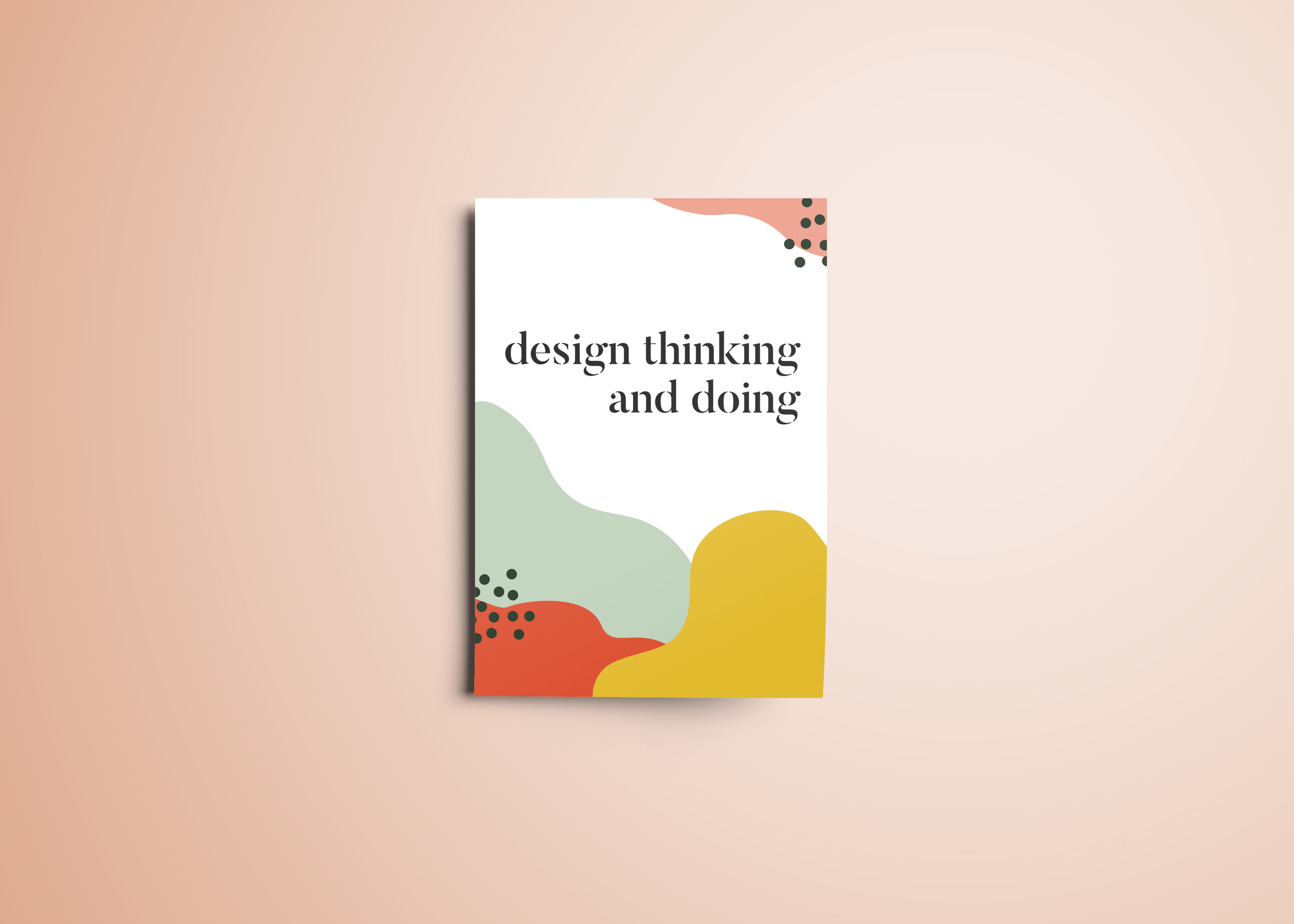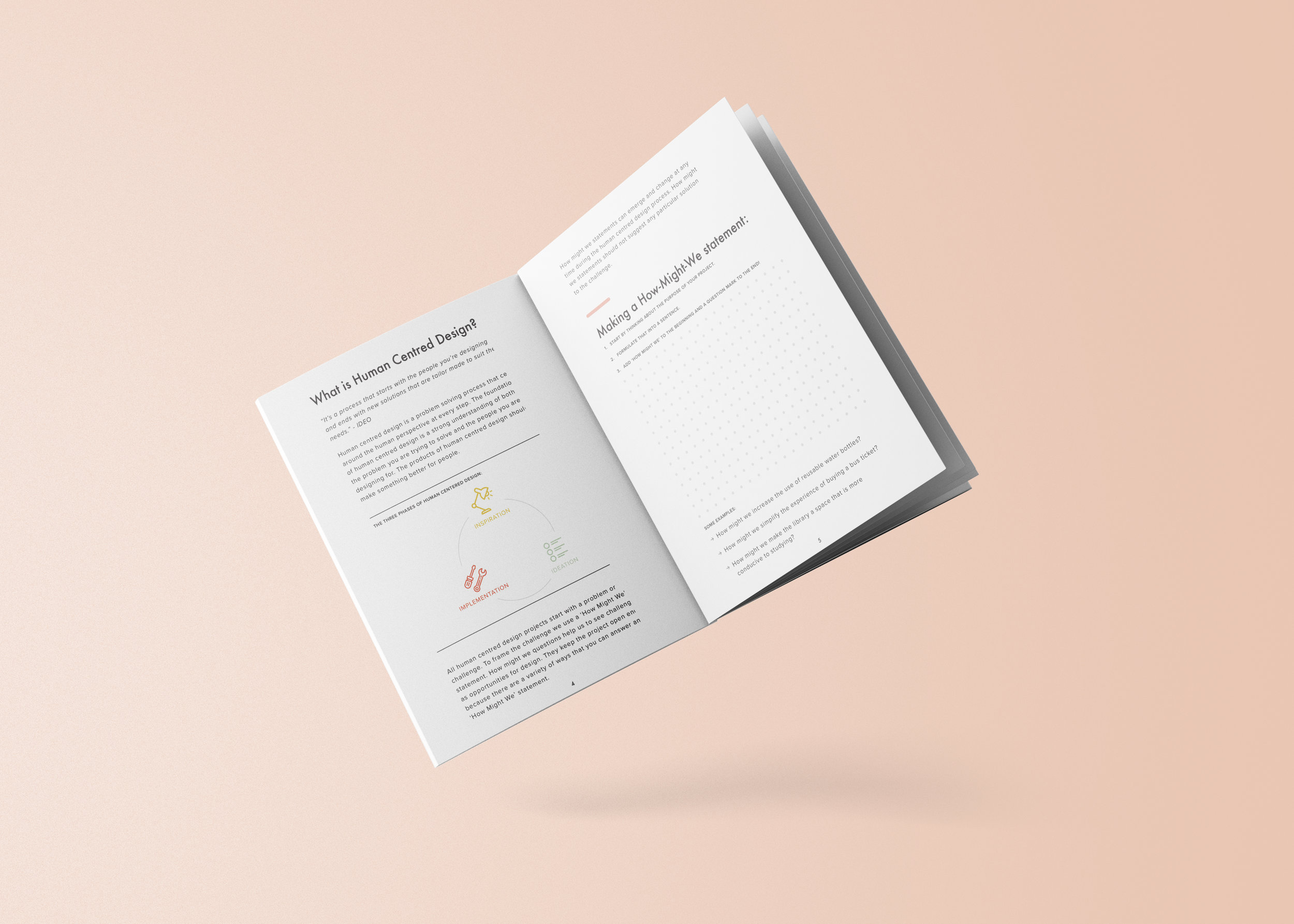Workshop: Design Thinking and Doing
Grade 9 girls learned about design thinking and its applications through an original, hands on, 90 minute workshop.
Project on behalf of the Mount Royal University Information Design Program for Explore STEM
Role Workshop developer and facilitator, both in collaboration with Mackenzie Johnson
Skills Workshop development and facilitation, copywriting, editorial design
Date May 2018
Explore STEM is an interactive conference designed to connect grade nine girls with the wide variety of opportunities that exist in STEM fields.
Mackenzie Johnson and I were asked to create a session for the conference on behalf of the Information Design program at Mount Royal University to introduce participants to the discipline of design and what we do in our program.
We developed and taught a workshop about Design Thinking and Human Centred Design. This topic suited the conference well because it encompassed dynamic skills and tools that can be applied outside of our classroom and combined with learnings from other sessions.
Participants engaged in an introductory discussion about Design Thinking.
After introducing the topics, we jumped in and led the girls through a condensed but complete Design Thinking process. This gave them a taste of what design involves and an understanding of how the pieces of the process combine to lead to problem solving. Throughout the session, we worked on the question “How might we encourage people to take the stairs instead of the elevator?”
The girls worked through the design process collaboratively in small groups.
In structuring the workshop, we focused on learning through doing. We broke the design process down into three phases (inspiration, ideation, and implementation) and explored the objective and relevant tools of each. Short, lecture style sections were blended with hands on, small group activities. This allowed us to facilitate the concrete application of the concepts and tools we were discussing. Additionally, this kept participants active and engaged, helped to stimulate questions, and provided opportunities for more personalized interaction. Most importantly, this ensured that the girls left the workshop having practiced these new skills and with confidence to use them in the future.
Our workshop was totally analog, allowing the focus to stay on the design process and universal tools. We wanted the students to feel like they could apply the skills they learned in any situation and to understand that design is about thinking and problem solving, not using a specific software.
To accompany the session, we created workbooks as a tangible way for participants to follow along. Additionally, the booklets provided a structure for working through activities, taking notes, and capturing insights.
By the end of the workshop, students were excited to share the ideas and prototypes they had developed. We concluded by discussing ways they could continue learning about design.
It was important to me that the girls walked away from this experience with an understanding that there is more to design than choosing colours and fonts; that it is about identifying, understanding, and solving problems. They learned how the design thinking process can be applied in a wide variety of situations, the tools used to understand a problem and get unstuck when trying to find solutions, and how to synthesize and articulate their ideas.
One of many ‘aha’ moments that took place during the workshop.
One of the most inspiring things for me about this process was watching kids do design. They were so creative, excited, and open to trying anything that they brought a feeling of play to all the work they did. The energy in the room was invigorating and their ideas refreshing. There is nothing better than watching the gears turn in a kid’s head and seeing their confidence grow with every ‘aha’ moment.
In the future, I would love to expand this workshop and introduce more people to Design Thinking as a useful tool that is fun to learn.
We were invited back to present our session at the 2019 Explore STEM conference. Unfortunately, due to other commitments, I was unable to be there. Mackenzie, along with two of our peers from the Information Design Program, facilitated the workshop in 2019.
This project was completed in collaboration with Mackenzie Johnson. You can find more of her work at mackenziejohnson.design
Photos by Emmy Wyatt. You can find more of her work at helloitsemmy.ca













